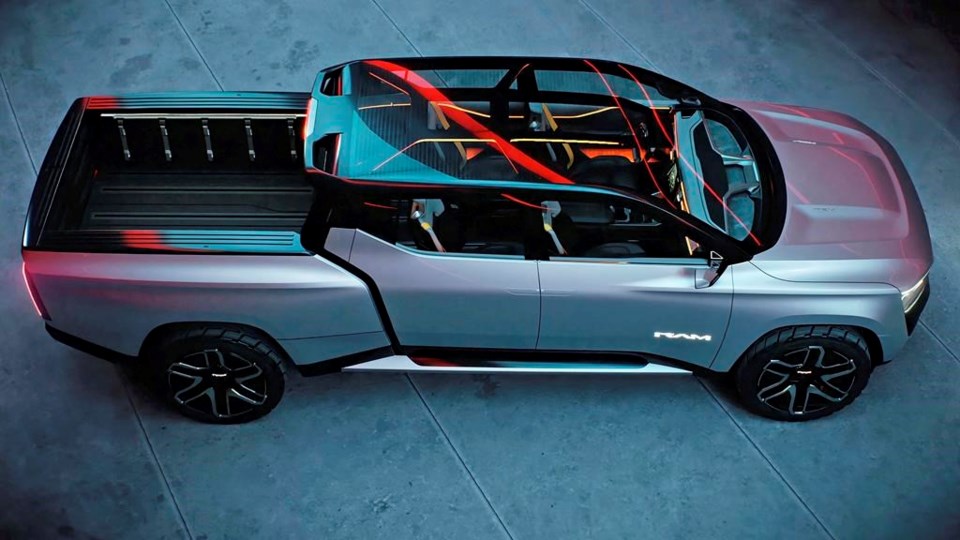CES (formerly known as the Consumer Electronics Show) in Las Vegas tends to showcase vehicles and technology that are further out than one might find at a traditional auto show. Edmunds attended this year and reports on the most notable vehicles and what new technology car shoppers might see in the coming years.
BMW’S TALKING CAR
BMW had one of the more forward-thinking concepts at CES. The i Vision Dee is a talking electric sedan with an artificial intelligence that BMW says “will go far beyond the level of voice control and driver assistance systems we are familiar with today.”
The name “Dee” stands for Digital Emotional Experience. One notable feature is an advanced head-up display that can display driver information on the full windshield at a base level and is capable of projecting virtual reality on the windshield. BMW says the AI can get excited when it sees you and can express its mood via screens on the front grille.
If that wasn’t enough, the i Vison Dee is covered in 240 e-ink panels, including the wheels, that allow it to shift colors at will. You can have a purple car one day and a checkerboard pattern another day.
These may sound like far-fetched features, but BMW says these are real products that are coming down the pipeline, starting in 2025 and beyond.
HONDA AND SONY ARE HOOKED ON AFEELING
These two well-known brands are hoping to excite car shoppers with their new joint venture brand, Afeela. At CES, they showed off their otherwise unnamed prototype electric midsize sedan. They didn’t provide any significant information about range or power but did say the sedan will be equipped with about 45 cameras and sensors to give it a number of automated driving features. Afeela also promises “best in class entertainment,” and it will have a small display on the grille to provide information to both pedestrians and the vehicle’s owner.
It is unclear how Afeela will affect other upcoming electric vehicles from Honda but preorders will open in the first half of 2025, with deliveries starting in spring of 2026.
RAM’S ELECTRIC REVOLUTION
The Ram Revolution concept is a preview of what we might expect to see from the brand’s first electric pickup. Some of the more notable features include third-row jump seats, a retractable steering wheel, a glass roof with the ability to adjust the shade of tint, and an 18-foot pass-through that allows for long items to be placed from the bed all the way to the front trunk.
Stellantis, Ram’s parent company, didn’t comment on the Revolution’s range or power. Since this was a proof-of-concept prototype, some of the Revolution’s high-tech features might not see production, but we’ll know more when the production model is revealed later this year. The Revolution is expected to go on sale sometime in 2024.
VOLKSWAGEN DOUBLE DOWNS ON SEDANS
Volkswagen returned to CES after a six-year hiatus to debut its first electric sedan, the ID.7. The ID.7 will be a substantial size; its 116.9-inch wheelbase is about the same as the Tesla Model S’. Volkswagen says the ID.7 has a range of about 435 miles, but that is based on the European testing cycle, so the figure will differ when it comes to the U.S.
The ID.7 boasts a number of high-tech features such as a 15-inch touchscreen, digitally controlled air vents, and an augmented reality head-up display. VW will reveal the final production version sometime in the second quarter of 2023.
VOLVO FOLLOWS AN HD MAP
The Volvo EX90 is a seven-seat electric SUV that the company calls a “highly advanced computer on wheels.” Volvo says the EX90 will have an estimated range of about 300 miles and an electric motor producing up to 496 horsepower. At CES, however, Volvo primarily focused on showing off the EX90′s Google HD map integration.
HD maps provide a greater level of detail about road landmarks and more to improve the awareness the vehicle has of the road. When combined with the EX90′s suite of cameras, radars and sensors, the more detailed maps allow the SUV to have a more accurate understanding of its position on the road. Volvo says the EX90 is equipped with all the technology to enable hands- and eyes-free driving. It won’t be a feature at launch, but Volvo says it will enable the feature when it can assure its safety.
Customers can configure their EX90 starting this fall, but deliveries won’t begin until early 2024.
EDMUNDS SAYS: We’re skeptical of some of the autonomous driving claims being made since this remains a tough nut to crack, but we’re excited about high-tech trucks and color-changing body panels that will arrive in the near future.
_______
This story was provided to The Associated Press by the automotive website Edmunds.
Ronald Montoya is a contributor at Edmunds.
Ronald Montoya, The Associated Press



